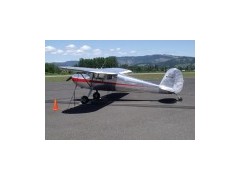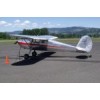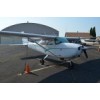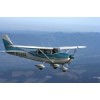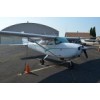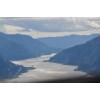Private Pilot Licensing Course
What is a private pilot’s license?
In order to be able to fly an airplane, you will need an FAA license. The private pilot’s license is the main certification that allows someone to fly a large variety of airplanes, carry passengers, and rent aircraft from a fixed base operation anywher in the U.S. Furthermore, the private pilot’s license is the starting point for anyone wanting to learn different areas of aviation (acrobatic, instrument, commercial, flight instructing), to use flying for business purposes, or to find a more convenient way of traveling.
The requirements for obtaining a private pilot’s license are set by Federal Aviation Regulations (FAR) and are stated as follows.
Eligibility Requirements (FAR Part 61.103)
Be at least 17 years of age for the rating.
Be able to read, speak, write, and understand the English language.
Have a current FAA medical certificate from an Aeronautical Medical Examiner (AME).
Receive ground training on the Aeronautical Knowledge areas listed below.
Pass with a score of 70% or greater on a 60 question, multiple choice, knowledge test on the Aeronautical Knowledge areas listed below.
Receive flight training on the Flight Proficiency areas listed below.
Meet all the Experience Requirements listed below.
Pass a practical test consisting of an oral exam and an in-flight exam with a FAA Designated Pilot Examiner (DPE) on the Flight Proficiency areas listed below.
Aeronautical Knowledge (FAR Part 61.105)
Applicable Federal Aviation Regulations of this chapter that relate to private pilot privileges, limitations, and flight operations.
Accident reporting requirements of the National Transportation Safety Board.
Use of the applicable portions of the “Aeronautical Information Manual” and FAA advisory circulars.
Use of aeronautical charts for VFR navigation using pilotage, dead reckoning, and navigation systems.
Radio communication procedures.
Recognition of critical weather situations from the ground and in flight, windshear avoidance, and the procurement and use of aeronautical
weather reports and forecasts.
Safe and efficient operation of aircraft, including collision avoidance, and recognition and avoidance of wake turbulence;
Effects of density altitude on takeoff and climb performance.
Weight and balance computations.
Principles of aerodynamics, powerplants, and aircraft systems.
Stall awareness, spin entry, spins, and spin recovery techniques for the airplane and glider category ratings.
Aeronautical decision making and judgment.
Preflight action that includes:
How to obtain information on runway lengths at airports of intended use, data on takeoff and landing distances, weather reports and forecasts, and fuel requirements.
How to plan for alternatives if the planned flight cannot be completed or delays are encountered.
Flight Proficiency (FAR Part 61.107)
Preflight preparation.
Preflight procedures.
Airport and seaplane base operations.
Takeoffs, landings, and go-arounds.
Performance maneuvers.
Ground reference maneuvers.
Navigation.
Slow flight and stalls.
Basic instrument maneuvers.
Emergency operations.
Night operations.
Aeronautical Experience (FAR Part 61.109)
At least 40 hours of flight time that includes at least 20 hours of flight training from an authorized instructor and 10 hours of solo flight training.
20 hours of flight training must include:
3 hours of cross-country (over 50 nautical miles).
3 hours of night flight training (1 hour after sunset and 1 hour before sunrise) with one cross-country flight of over 100 nautical miles total distance and 10 takeoffs and landings to a full stop.
3 hours of flight training on the control and maneuvering of an airplane solely by reference to instruments.
3 hours of flight training in preparation for the practical test with 60 days of the test.
10 hours of solo flight must include:
5 hours of solo cross-country including one cross-country of at least 150 nautical miles total distance with full stop landings at a minimum of three points (of which one leg is over 50 NM).
3 takeoffs and landings to a full stop at an airport with an operating control tower.

